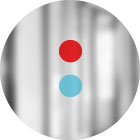In Audience Insights Report: Festival Fans, Nielsen reports that 32 million U.S. citizens attend at least one music festival every year, and nearly half are 18-34 (Millennials). The numbers are growing every year, and with that increase, brands are jumping on board to transform festivals into an experience mecca.
As a brand marketing manager, what’s the best way to capitalize on this opportunity?
Identify your festival sweet spot
This might sound obvious, but your brand should find a festival that aligns with its own consumer base. If your product is a craft soda, find festivals that reel in folks who care about where, how and by whom their soda is made. Once you know the audience, you can better frame how you should engage it.
While this task may require an initial investment of time and research, it can open new opportunities for updated brand positioning and consumer access. Take 7Up, for example – as a teeny slice of the soda category (which in general is struggling with marketing to a health-conscious audience), the brand is recognized as one of the biggest supporters of the EDM scene. No caffeine. No alcohol. Just strategic positioning to a receptive audience.

Strike the right balance
Have you ever felt completely overwhelmed by the amount of branding at a festival? You walk into the festival space and wonder, “Seriously, why did I pay just to be bombarded with ads?” Or on the opposite end, have you ever felt eerily alone? You walk into a festival and think, “Hmmm, am I in the right place? Shouldn’t there be some no-name soda company trying to get me to sample their diet cherry cola? Even Earth Day festivities have sponsored recycling bins.” Brand exposure or brand POS at festivals exists in a wide spectrum; how you choose to participate is up to you. Too much brand exposure leads to the consumer not paying attention to any one brand because of a sensory overload. Too little branding leaves the consumer wanting more and allows them to miss the opportunity to engage with a brand they could have developed a positive relationship with.
Improve the experience
No matter how sweet your sponsorship is, remember that the crux of the festival is the music. Or the wine. Or the fashion. It depends on the festival, of course. My point is: People aren’t there for you. But you can still make your sponsorship useful by tying your sponsorship into improving their overall experience. A charging station for phones. Free drink or food samples. Exclusive access to a relaxation area. Free water access. Recycling bins. Get it? The more you can use your sponsorship as a means to enhance the heart of their experience, the more essential your brand becomes.
Fill in the slow parts with entertainment
Food and drink festivals generally span anywhere from 3-6 hours. But music festivals and city events can last even longer, with headlining acts spread over multiple stages … even multiple days. With a little imagination and creativity, you can transform a blah waiting game into something to not only pass the time, but also carve out exclusive brand engagement. Goose Island’s “Missed Connections” stand at Pitchfork Music Festival comes to mind; not only did it provide a unique opportunity for matchmaking; the public posts were also entertaining to read.

Think beyond the festival limits
Brands are starting to facilitate awareness and engagement outside the festival grounds. For example, ride sharing service app Uber activated free pop-up concerts in corners of Chicago featuring artists from the city’s popular summer festival, Lollapalooza. The engagement was entirely outside the festival grounds, creating exclusive access for consumers. And even for on-site engagement, you should be thinking beyond the short-term activation. Adding a digital component can enable you to capture key data about your festival-going consumer base. If an experience is impactful enough, folks will exchange time and information for the chance to participate. With that data, you can inform future strategy. And maybe take over the world.
For a festival sponsorship to pay off, the initial planning phases demand careful consideration and research. “If you build it, they will come,” isn’t the most practical mindset when you’re one of hundreds of brands pining for consumer’s attention – so be realistic about how to approach your target audience. As festivals continue to grow in number, size and sponsorships, the challenge of standing out and turning awareness into sales continues to evolve – just like your audience.














